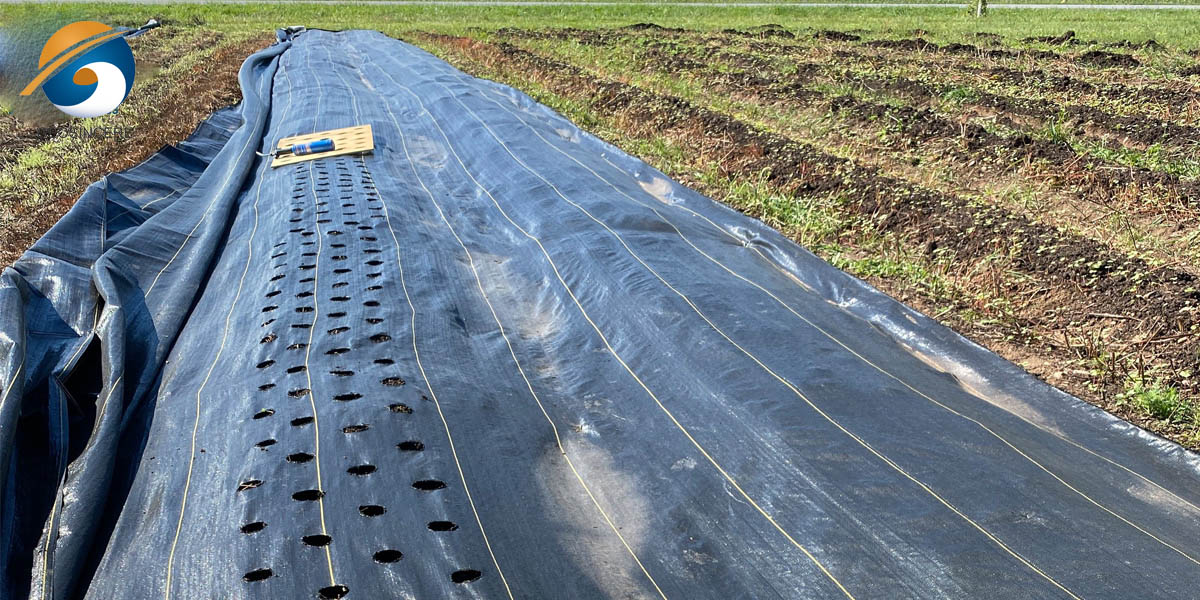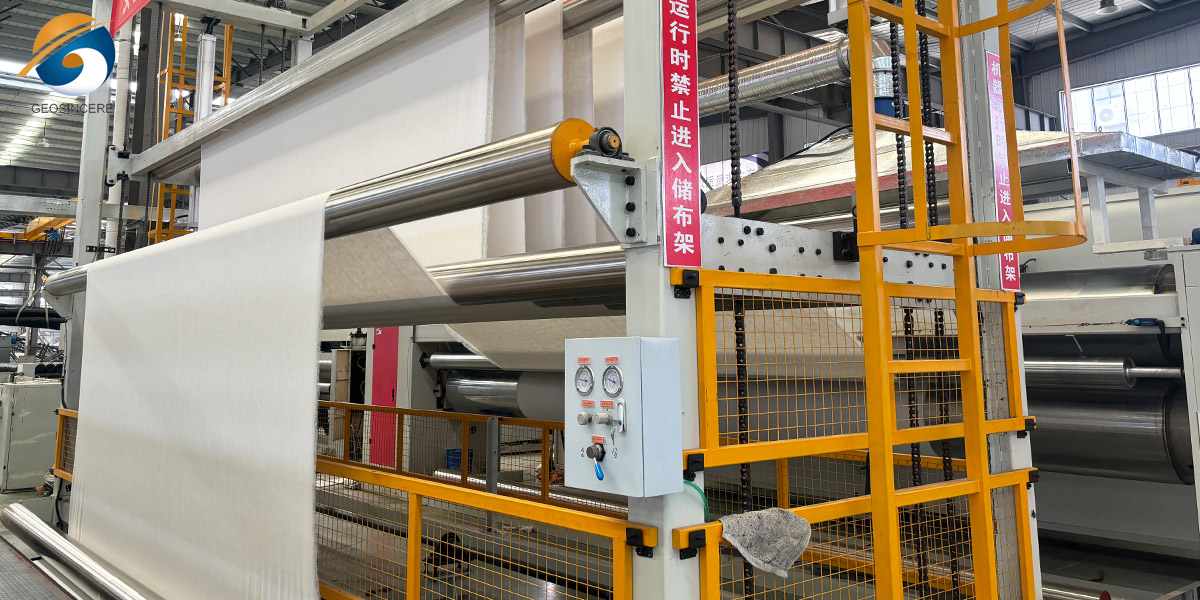Ultimate Comparison Between Woven and Nonwoven Geotextile
Geotextile, also known as geotextile or geofiber, is a multilayer fabric typically made from materials such as polyester, polypropylene, or polyethylene. It comes in two basic forms: woven (similar to a burlap bag) and non-woven (similar to plush). Its excellent permeability and filtration properties protect soil and mitigate erosion, while also increasing soil stability and bearing capacity. It is often used in projects such as highways, railways, and embankments as a barrier to reinforce and protect soil, providing separation, filtration, reinforcement, protection, or drainage. A growing number of geotextile derivatives, such as geogrids, impermeable layers, geogrids, and geotextile tubes, are now finding applications in geological and environmental engineering design.
1. What are the types of Geotextile ?
Designed in a wide variety of styles, yet, the most common are high strength woven geotextile and needle punched nonwoven fabric. Woven and non-woven geotextiles are both permeable, however non-woven geotextiles have a smaller EOS (opening for fines to pass) and a higher flow rate meaning they are preferred for drainage and filtration applications.
1.1 What is a Woven Geotextile?
Woven geotextile fabric is produced when single yarns are woven together in a loom. This yields tough and durable geo fabric that are used for roadways, driveways, residential streets, and highway applications. Although it’s less porous than other types, woven geotextile serve long-term separation and reinforcement needs. Its chemical resistance ensures durability in even adverse chemical environments.
1.2 What is a Non-woven Geotextile?
Non woven geotextile fabric is manufactured by needling the fibres, among other mechanical entangling forms. They are mainly made from synthetic polymers, including polyester and polypropylene, and their strength can be improved through heat treatment (calendering), which bonds the fibers together. However, this process typically reduces permeability. The inherent high permeability of non woven geotextile comes from their random, porous fiber structure created during needle-punching. Non woven landscape fabric is often used in projects for protection, filtration, separation, and drainage.
2. What are the Distinction Between Woven and Nonwoven Geotextile?
2.1 Manufacturing Method
- Woven Geotextile: The manufacturing method includes the common weaving technique, the place 2 wonderful yarns (warp and weft) are interlaced in a regular, uniform pattern. This procedure is greater labor-intensive and requires specialised machinery, contributing to the greater cost.
- Nonwoven Geotextile: Unlike weaving, nonwoven fabric are created by means of bonding or felting fibers thru mechanical, chemical, or thermal processes. This lets in for quicker manufacturing instances and flexibility in cloth choices, making it greater cost-effective.
2.2 Structure
- Woven Geotextile: The shape is tightly organized, with fibers interlacing in a regular, predictable pattern. This uniformity enhances power and durability, which is necessary for purposes the place stress resistance is needed.
- Nonwoven Geotextile: The fibers in non woven geotextile drainage fabric is randomly arranged, frequently ensuing in a much less uniform texture, which may additionally resemble paper. This randomness reduces its energy in contrast to woven fabric however is appropriate for lighter, much less disturbing tasks.
2.3 Durability
- Woven Geotextile: These fabric are acknowledged for their excessive durability, making them appropriate for purposes requiring long-term use or publicity to harsh conditions. The interwoven shape gives power and resilience.
- Nonwoven Geotextile: Although in the beginning durable, non woven filter fabric substances have a tendency to degrade extra shortly over time, specifically underneath mechanical stress. They are extra appropriate for momentary use or disposable applications, like wipes or filters.
2.4 Appearance
- Woven Geotextile: Woven fabric regularly have a textured surface, which can be aesthetically desirable and adaptable for a number of graph needs. The floor detailing permits for a extra visually appealing stop product.
- Nonwoven Geotextile: Geo textile material typically have a smoother, flatter appearance, regularly missing the problematic designs of woven materials. However, their center of attention is extra on functionality, such as filtration or insulation, than on aesthetics.
2.5 Cost
- Woven Geotextile: Because of the complexity and time-consuming nature of the manufacturing process, woven fabric have a tendency to be extra expensive. This is mirrored in each cloth and labor costs.
- Nonwoven Geotextile: Geotextile road fabric is commonly extra cheap due to their simpler, faster manufacturing process. The cost-efficiency makes them a favored preference for high-volume, low priced applications.
2.6 Characteristics :Tensile Strength
- Woven Geotextile: The tensile energy is typically greater alongside the route of the fibers due to the interwoven structure, making them best for use in conditions the place resistance to stretching or pulling is necessary.
- Nonwoven Geotextile: Tensile power in non woven geotextile landscape fabric is extra uniform throughout the fabric, however generally decrease than in woven fabrics. The random fiber orientation would not provide the identical directional strength.
2.7 Stiffness
- Woven Geotextile: Generally extra inflexible and much less bendy due to the tight interlacing of fibers. This can be advisable in structural purposes the place the cloth wants to maintain its shape.
- Nonwoven Geotextile: Non woven geotextile filter fabric have a tendency to be greater flexible, which makes them appropriate for purposes requiring drapability or formability, however they sacrifice the pressure woven fabric offer.
2.8 Permeability
- Woven Geotextile: The permeability of woven fabric is frequently decrease due to the fact the fibers are tightly interlaced, which may also restrict the waft of air, water, or different substances.
- Nonwoven Geotextile: Geotextile filter cloth have a tendency to have greater permeability due to the gaps between the fibers, making them perfect for filtration, drainage, and different functions the place airflow or liquid passage is essential.
2.9 Abrasion Resistance
- Woven Geotextile: Woven geotextile fabric normally have desirable abrasion resistance due to the interlocking nature of the fibers. This makes them greater long lasting in hard stipulations or when uncovered to friction.
- Nonwoven Geotextile: While driveway fabric stabilization geotextile fabric have some resistance to abrasion, they are normally much less nice than woven fabrics. Over time, they can put on down, in particular when uncovered to high stress or friction.
2.10 Tear Propagation
- Woven Geotextile: Woven fabric have a tendency to have a greater tendency for tear propagation alongside the route of the fibers, which means as soon as a tear begins, it can unfold extra without difficulty alongside the weave pattern.
- Nonwoven Geotextile: Non-woven fabrics, due to their random fiber structure, may additionally withstand tear propagation better, however their energy in resisting tears usual is decrease in contrast to woven fabrics.
2.11 UV Resistance
- Woven Geotextile: UV resistance in woven fabric can be stronger with the aid of the use of specialised coatings or UV-resistant materials, however it generally relies upon on the precise fibers and remedies used.
- Nonwoven Geotextile: Nonwoven fabric can additionally be handled for UV resistance, however their basic sturdiness in UV-exposed environments may additionally be decrease except in particular designed for outside or high-exposure use.
3. Difference of Applications Between Woven and Nonwoven Geotextile
3.1 What is Woven Geotextile Used for?
The tensile electricity of woven geotextile is best for stabilising base path below roads and pavements, and for reinforcing tough soil types. Another gain of woven is notable creep resistance. Resulting in greater lengthy time period graph strengths. Woven geo offers extraordinary soil confinement ensuing in most fulfilling load distribution. A low-priced answer for bolstered soil on:
• Embankments and slopes
• Stabilisation projects
• Reinforcing pavements and roads
3.2 What is Nonwoven Geotextile Used for?
Applications encompass avenue and rail work, separation, drainage, safety and filtration works. Often used in parks, landfills, on batters and slopes, at the back of holding partitions and more. Designed for purposes wanting terrific drainage, like sports activities fields and in landscaping situations. The greater permeability permits moisture to drain at a quicker price in contrast to woven fabrics. Most non woven polypropylene fabric is made from polyester. Resistant to alkalis and acids, they are long-lasting when set up below the soil. Non-woven geotextiles use include:
• Pavement stabilisation
• Subgrade or subsoil separation
• Slope stabilisation
• Liner protection
Geotextiles have severa applications, along with roads, airports, railways, embankments, excavation walls, reservoirs, canals, dams, dikes, coastal projects, and sand obstacles at building sites. Geotextiles are generally positioned on soil surfaces underneath anxiety to make stronger the soil. Geotextiles can enhance soil electricity at a decrease price than regular soil nails. Furthermore, geotextiles allow planting on steep slopes, supplying a extra secure slope. During demolition projects, geotextiles, mixed with wire fencing, can assist manage explosive debris. Coconut fiber geotextiles, due to their first-rate mechanical strength, are extensively used for erosion control, slope stabilization, and bioengineering. Coconut fiber geotextiles have a lifespan of about three to 5 years, relying on the weight of the fabric. Upon disposal, the product decomposes into humus, enriching the soil.
4. Common Uses for Geotextile
4.1 Geotextile for Drainage and Filtration
Geotextiles have wonderful water permeability and can be used as drainage materials. When laid between soil and structures, they successfully drain moisture from the soil, stopping soil erosion and structural damage. Geotextiles additionally act as filters, stopping soil particles from coming into the drainage machine and making sure clean drainage.
4.2 Geotextile for Reinforcement and Enhancement
Geotextiles can work collectively with soil, sand, and gravel, and different substances to shape bolstered soil structures. The reinforcement furnished by means of geotextiles improves the bearing potential and steadiness of the soil, decreasing deformation and settlement. These strengthened soil buildings are broadly used in initiatives such as slope stabilization, embankment reinforcement, and keeping walls.
4.3 Geotextile for Isolation and Filtration
In civil engineering, it is regularly fundamental to separate one of a kind substances to forestall them from mixing or infiltrating. Geotextiles can serve as isolation materials, keeping apart specific soil layers, sand and gravel layers, or structures. Furthermore, the filtration impact of geotextiles prevents high-quality particles from getting into the coarse particle layer, preserving soil stability.
4.4 Geotextile for Seepage Control and Protection
Geotextile PP can be used as anti-seepage substances to stop groundwater, rainwater, and different drinks from penetrating into constructions or foundations. The software of driveway fabric stabilization geotextile fabric can efficaciously enhance the waterproofing and sturdiness of buildings. Furthermore, geotextiles can be used as defensive substances to shield soil and constructions from erosion by means of herbal elements such as wind, rain, and water.
4.5 Geotextile for Road and Railway Construction
In street and railway construction, geotextiles can be used to strengthen and drain roadbeds. Laying geotextiles in the roadbed improves the bearing capability and balance of the roadbed, lowering deformation and settlement. Geotextiles can additionally serve as drainage layers, putting off moisture from the avenue floor and roadbed, making sure secure passage on roads and railways.
4.6 Geotextile for Environmental Protection and Ecological Restoration
Geotextiles additionally play an necessary position in environmental safety and ecological restoration. For example, in the administration of rivers, lakes, and different water bodies, geotextiles can be used to assemble ecological revetments and wetland safety projects, enhancing the ecological surroundings of the water bodies. Furthermore, geotextiles can be used as soil conservation substances in initiatives such as land reclamation and desertification control, assisting to repair land ecology.
An necessary civil engineering artificial material, geotextiles have a vast vary of functions in drainage and filtration, reinforcement and enhancement, isolation and filtration, anti-seepage and protection, street and railway construction, environmental protection, and ecological restoration. With technological developments and growing engineering demands, we agree with that geotextiles will have even greater progressive purposes and room for improvement in the future.
Conclusion & Recommendation
In conclusion, woven geotextiles are best for high-strength functions requiring durability, whilst nonwoven geotextiles excel in drainage, filtration, and flexibility.
For most reliable geosynthetics, Shandong Geosino New Material Co., Ltd. (GEOSINCERE Geosynthetics) is the best choice. They provide a vast vary of long lasting merchandise that meet numerous task needs, making sure dependable overall performance and long-term solutions.








